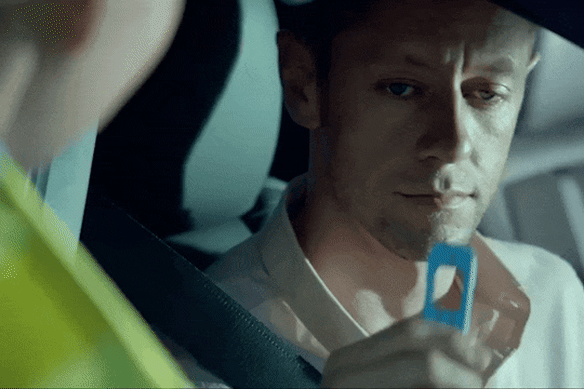This was published 8 months ago
Opinion
Drug-driving rates are soaring, but it’s not just down to extra testing
Milad Haghani
Disaster risk expertA new report from the NSW Bureau of Crime Statistics and Research sheds light on an alarming trend: drug-driving charges have skyrocketed. In 2008, an average of 102 people faced charges for drug-driving each quarter. Fast-forward to 2023, and this figure has swelled to 3296 per quarter – a 32-fold increase.
It prompts a question: Are more people driving under the influence of drugs, or is this merely the result of ramped-up testing? Spoiler alert: there’s no straightforward answer. But by unpacking the existing data and drawing on other sources, we start to see a clearer picture.

Roadside drug-driving tests have expanded, but to nowhere near the scale of random breath tests.
Across Australia, all states and territories have implemented roadside drug-testing with a zero-tolerance threshold, meaning drivers face penalties for any detectable level of specific illicit drugs. NSW enforces particularly strict rules, making it illegal to drive with any level of cannabis, MDMA, cocaine or methamphetamine. Roadside tests start with a saliva sample, followed by a confirmatory test if any of those four drugs are detected. A positive result leads to immediate penalties such as license suspension and fines – even when there’s no sign of physical impairment.
Mobile drug testing in NSW started as a limited initiative in 2007, involving about 20,000 drivers a year. In March 2015, the state government set a target of 97,000 tests a year by 2017. A year later, this goal rose to 200,000 tests by 2020, with cocaine added to the substances screened. Although the pandemic slowed progress, tests climbed to 156,000 a year by 2023. The aim is to deter drug-driving through high-frequency, random testing. But is that goal being achieved?
With expanded testing, the surge in drug-driving charges might seem obvious. It’s more complex than that. In my view, three indicators are critical: positive detection rates, trends in the prevalence of drug use, and the number of road fatalities for which drugs were found in the driver’s system.
In the early stages of NSW’s mobile drug-testing program, the positive detection rate hovered around 2 per cent. As it expanded, this peaked at nearly 18 per cent in 2021 before settling around 11 per cent last year. Amphetamines and cannabis remain the most detected substances. The rise in detections likely reflects an increasingly targeted approach by police and, potentially, a rise in the number of drug-impaired drivers on the roads.
If the rise in charges were purely due to more targeted police operations, with no actual increase in the prevalence of drug-driving, then we wouldn’t expect drug-impaired driving to be a growing factor in road fatalities. Between 2013 and 2022, however, the percentage of road deaths involving drugs has climbed – from 9 per cent to 18 per cent for drivers and from 7 to 24 per cent for motorcyclists. Meanwhile, the proportion of road fatalities involving an illegal blood-alcohol concentration has remained relatively stable for motorcyclists (about 20 per cent) and has even slightly declined for drivers, now roughly equating to the motorcyclist rate.
The percentage of the NSW population reporting illicit drug use has climbed from about 13 per cent in 2007 to about 18 per cent in 2023, according to the National Drug Strategy Household Survey, conducted by the Australian Institute of Health and Welfare every two to three years. The use of cannabis, the most commonly reported drug, rose from about 8 per cent in 2007 to 11 per cent last year.
One thing is clear: the sharp rise in drug-driving charges in NSW cannot be attributed solely to increased testing. A real increase in drug-driving cannot be ruled out. And another thing is clear: mobile drug testing is falling short of its primary goal – to deter drug-driving. The scale of the program simply isn’t extensive enough to serve as an effective deterrent. Compared with random breath testing – almost 3 million tests a year – the scale of drug testing remains very small. So drivers can simply take their chances.
Scaling up drug testing to levels comparable with RBT faces a key barrier: the high cost of drug-test kits and their administration. Expanding the program to a level that could achieve effective deterrence appears unlikely. The government, therefore, might need to broaden its approach by incorporating behavioural interventions and public education campaigns – similar to the anti-drink-driving ads that shifted public attitudes with the message, “If you drink then drive, you’re a bloody idiot.”
With road fatalities nearing a decade high last year, we need every possible tool in our arsenal. Enforcement alone won’t cut it.
Dr Milad Haghani is a senior lecturer at the University of NSW, specialising in public safety and urban mobility.